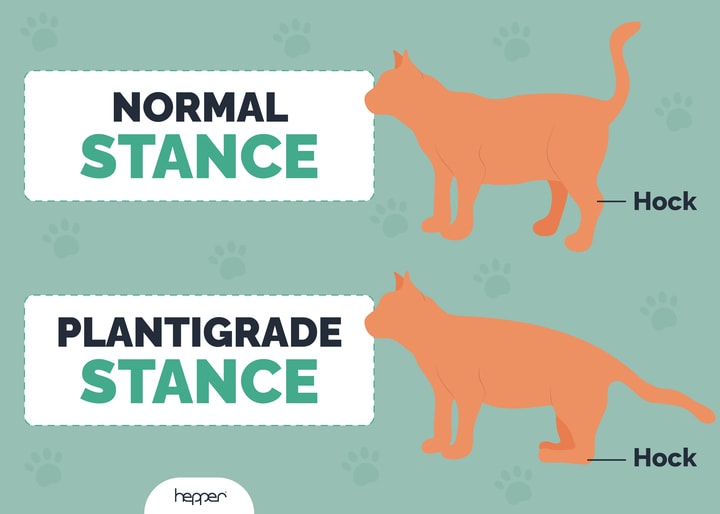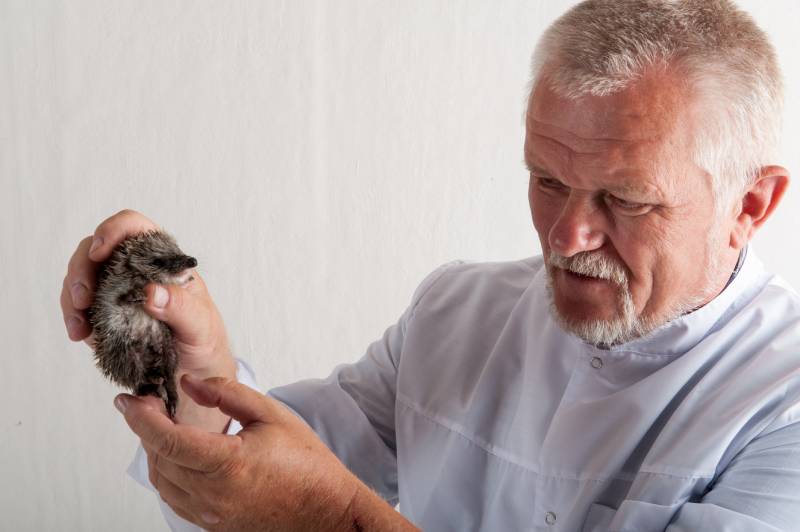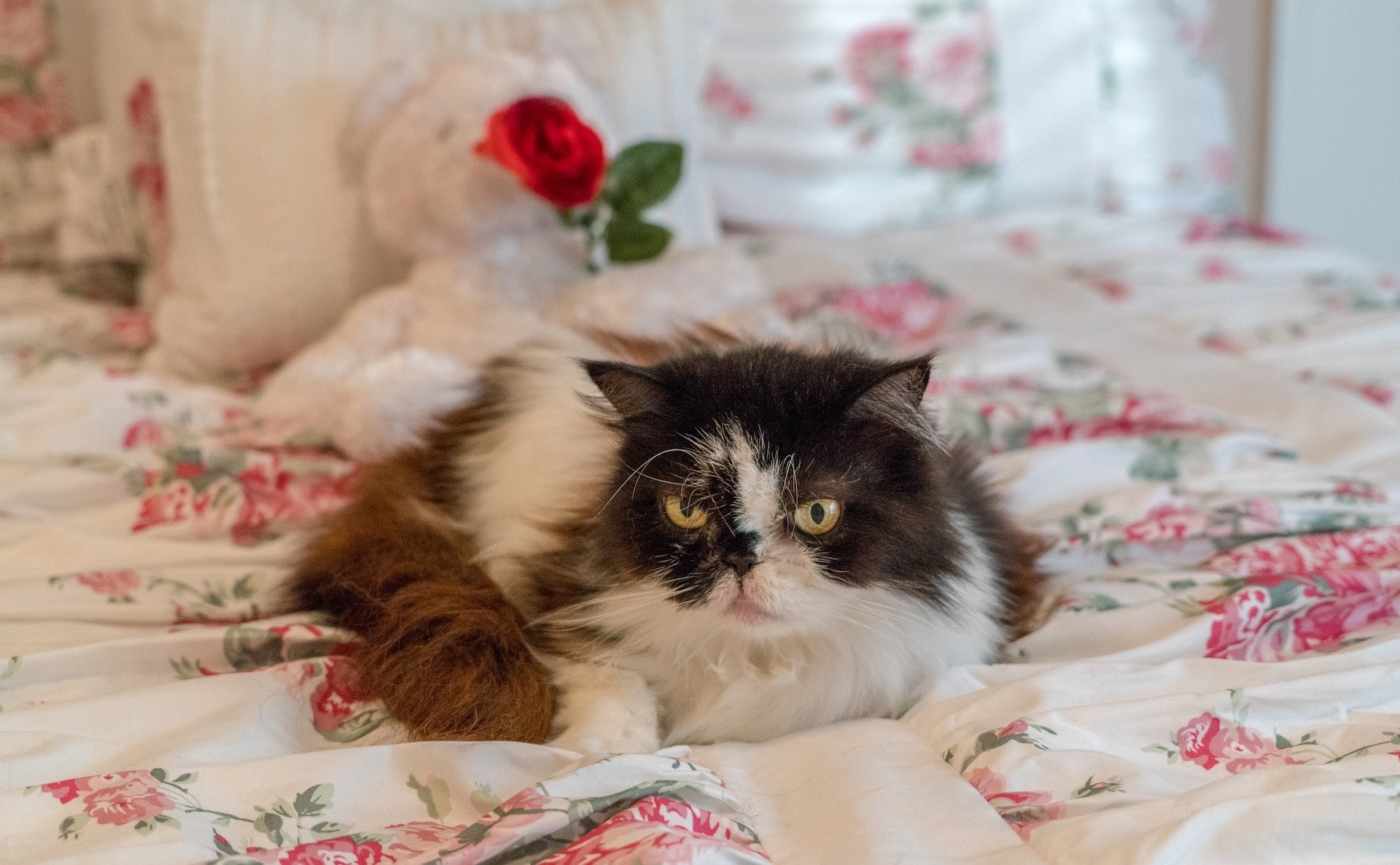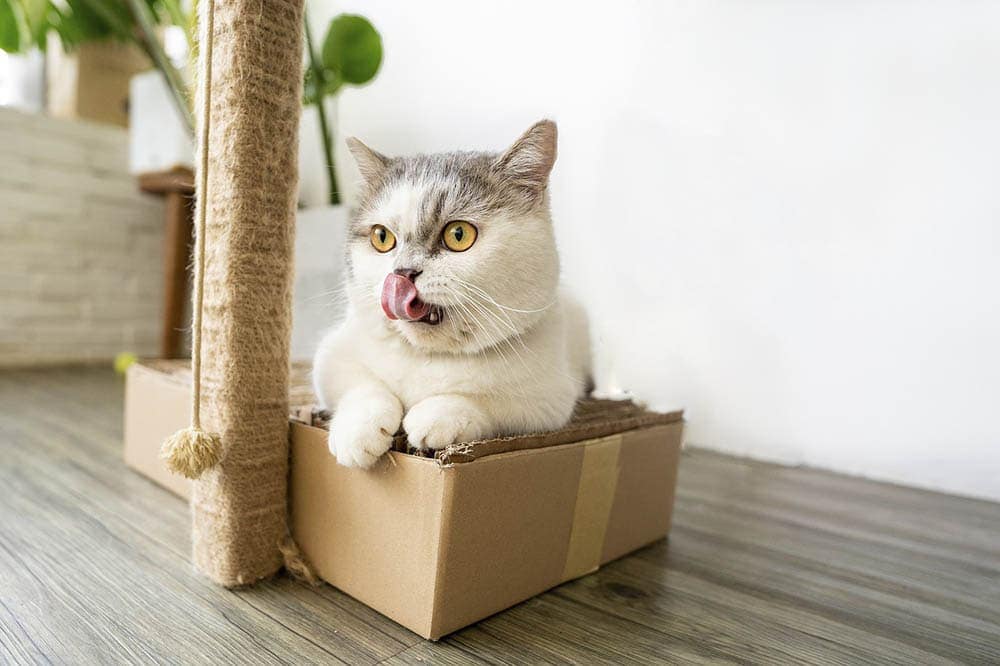7 Cat Sitting Positions & What They Mean (Vet-Verified Info With Pictures)
Updated on
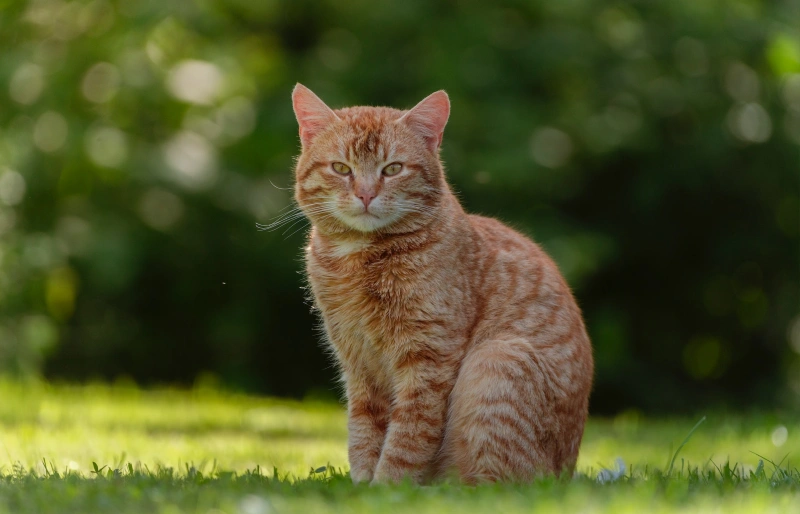
Our favorite feline roommates display some serious athletic skill, but just as interesting are the numerous distinct ways they lounge. The positions a cat sits or lays can signal a lot, from their mood to their comfort, health, and more. Whether your cat is getting into some really weird positions you need to demystify or you just want to learn as much as possible about your cat, we’ve got you covered. Read on as we talk about some of the most common sitting positions for cats and just what the heck they mean.
The 8 Cat Sitting Positions
The following interpretations of feline body language are mostly anecdotal interpretations. While some cats may adopt these postures for the reasons stated by the author, other cats may have idiosyncratic traits that result in them displaying the same postures for different reasons. If you feel as if your cat’s posture looks strange or has suddenly changed, seek prompt veterinary input, as some ailments (such as diabetes) can lead to an altered posture.
1. The Loaf
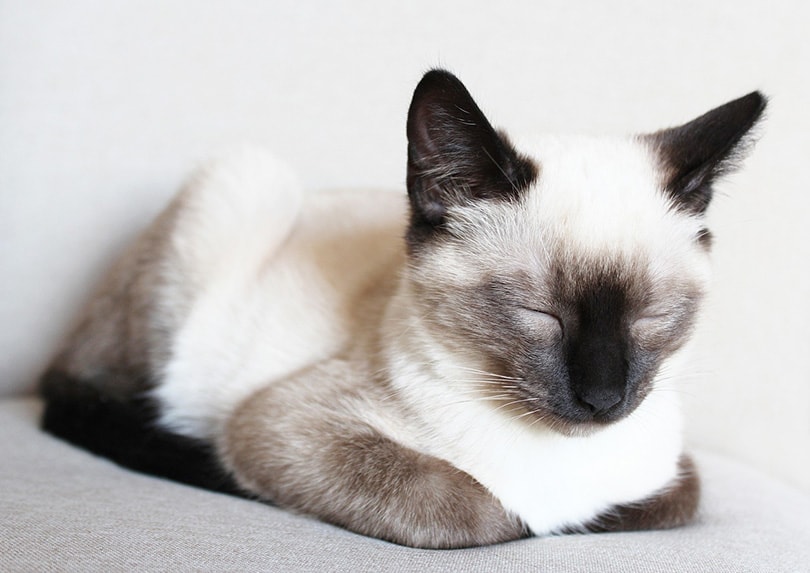
The loaf is one of the more adorable sitting positions, where your cat curls up their legs underneath their body and resembles a furry loaf of bread. Cats are relaxed in this position, but their legs are in direct floor contact and with their belly down in case they need to move quickly in response to a threat or prey. Your cat might lightly drowse when they loaf, but they usually don’t go into deep sleep. Either way, this position likely signals that your cat is comfortable and trusts you.
2. Standard Sitting
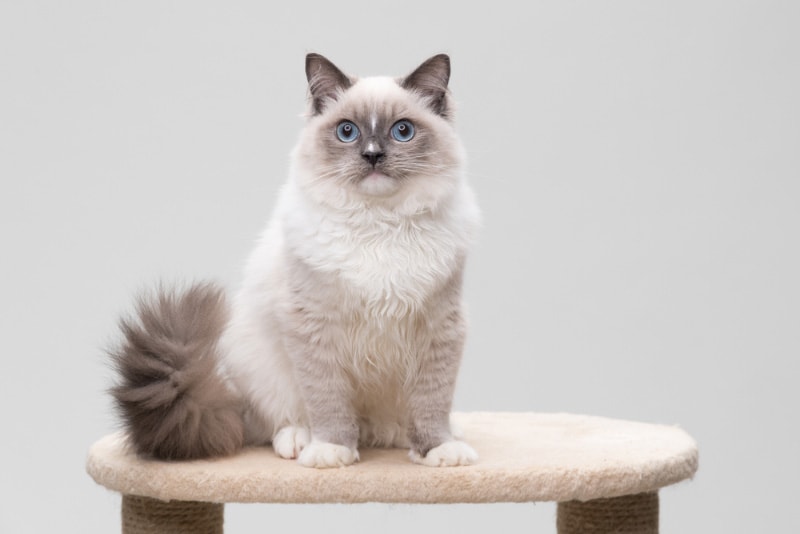
Cats will sit on their back legs and with their front legs outstretched in the “regular” sitting position when they’re very relaxed and see no need to assume a defensive position. They might be actively watching you, an interesting plastic bag, the TV, or are simply gazing out the window longingly, but who really knows what they’re thinking? Notably, this position probably means that your cat sees no need to be territorial or dominant, so don’t expect to see this position often if your cat isn’t 100% comfortable with your home environment.
3. Tail Down Sitting

A cat with their tail hanging down between their outstretched back legs and their front legs underneath them is usually perceived as confident with their lot in life—not a threat to be seen anywhere in sight. Cats love to sit like this when they feel in control of their territory and don’t sense any threats worth investigating. Your cat may also sit like this and swish their tail back and forth when something finally does engage their attention.
Scottish Folds often assume this posture because they inherently suffer from a joint condition called osteochondrodysplasia, also known as Scottish Fold disease. This condition results from the same mutation that gives them their popular folded ears.
4. Crouching Kitty
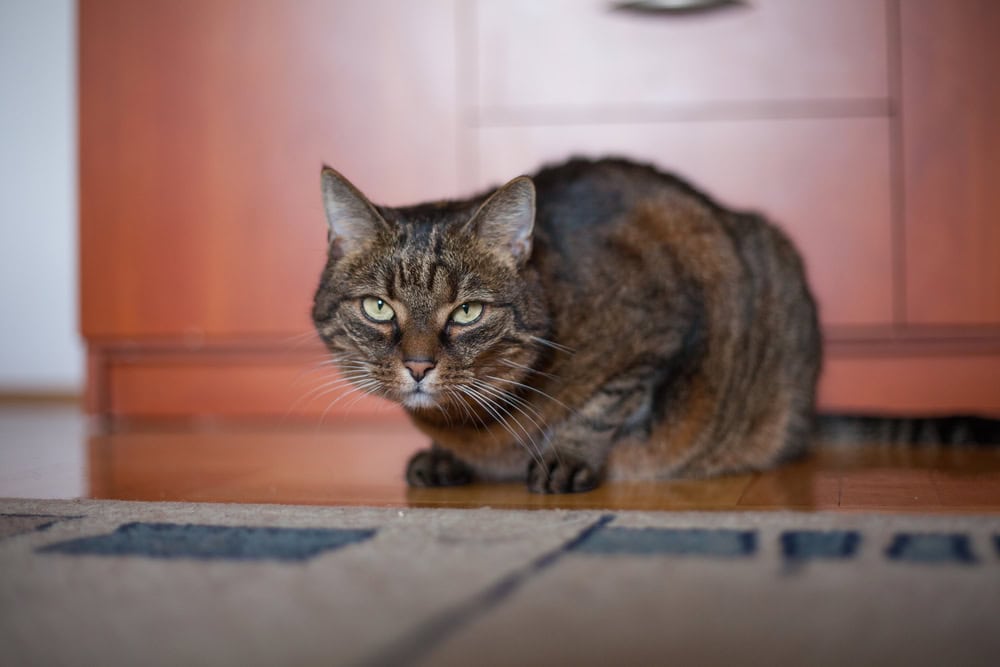
A crouching stance most likely means your cat is on the defensive, perhaps after a spat with one of your other cats or after they’ve spied a potential threat. Crouching cats hold their paws at the ready just in front of them low to the ground, while hiding their vulnerable belly against the floor. Your cat’s tail will probably be swishing in agitation, their ears may be laid low on their skull, and their eyes might dilate in response to fight or flight hormones produced by anxiety, fear, or aggression. Their eyes could also narrow to slits, which could indicate aggression or defensiveness.
5. Tucked Loaf

If your cat appears to be hugging themselves with their tail with their limbs in a tight loaf position, they’re potentially anxious or fearful in response to environmental stimuli they can’t control. Things like loud storms, raucous houseguests, new people or animals, or just ordinary household objects they don’t quite understand. It’s important to notice when your cat is feeling anxious or fearful and take steps to address the issue because you want them to feel safe and comfortable in their home. Alternatively, cats may also assume this posture if they’re overly cold, as the closer their limbs are to their body, the warmer they will be.
6. Bottoms Up
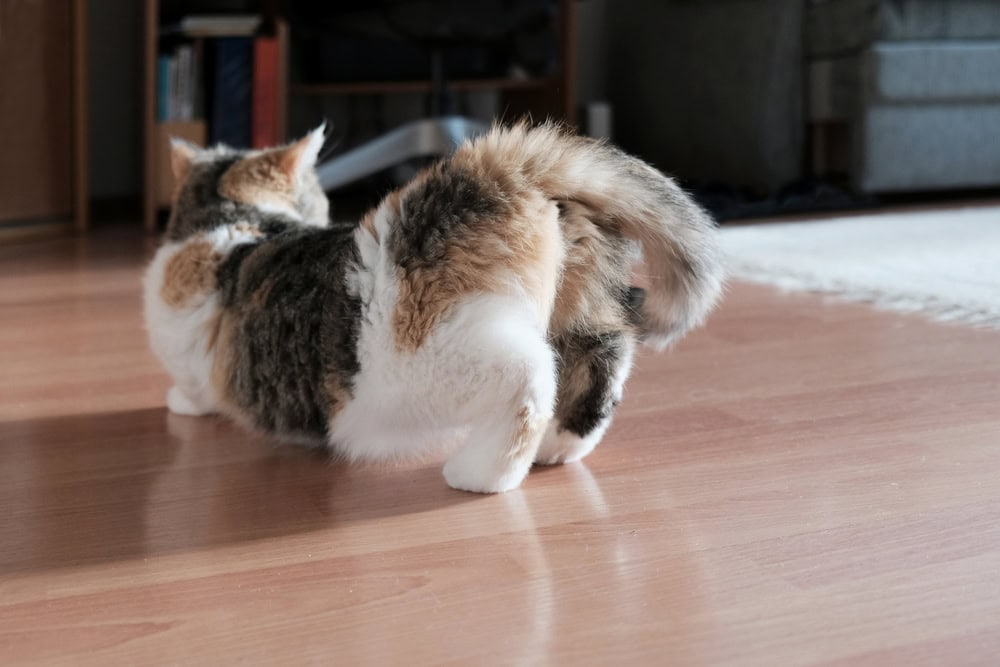
Female cats in heat frequently stretch their front legs out with their head low and their hindquarters in the air as a way of attracting mates. Even if there aren’t any other cats around, your cat may vocalize much more often, pace around as if searching for something, or develop an intense interest in going outside. We suggest you take extra steps to secure your doors and windows and be careful to not let your cat slip out the door if you see them in this position. We also recommend discussing spaying your cat with your veterinarian.
7. Bone Breaking Positions

This is a catch-all umbrella term for those countless occasions you catch your cat sleeping in a way that makes you think they’ll break their neck. Cats’ unique bodies can mold themselves to sinks, boxes, and nearly any other vessels in a fluid-like way that makes them look like they’re liquid. Acrobatic escapades can get your cat’s limbs in all sorts of unlikely positions, and those are the perfect chances to grab a photo for Instagram. They’re fine, really. Your cat won’t really hurt themselves in those wacky positions, and maybe they’ll learn a lesson on appropriate sleeping spots!
8. Plantigrade Stance
Though most postures cats assume are relatively harmless, there is one particular posture you should be very observant of. This is known as the plantigrade stance, where your cat prefers to sit on their hocks rather than on their feet. This is generally due to an abnormal weakening of the muscles of the hind limbs and is often associated with some ailments. Chief amongst these is diabetes. If you see your cat sitting in such a posture, it’s very important to seek veterinary care for them promptly.
Conclusion
Cats are mysterious creatures, but we’ve managed to decode some of the most common sitting positions you probably see on a regular basis. Sitting with their tail curled around them could be a sign that they’re anxious, and watchful kitties will crouch down like tigers ready to pounce. Use contextual clues along with your cat’s position to puzzle out their mood. You’ll be the cat whisperer in no time.
Featured Photo Credit: Robert Laszlo, Pexels


